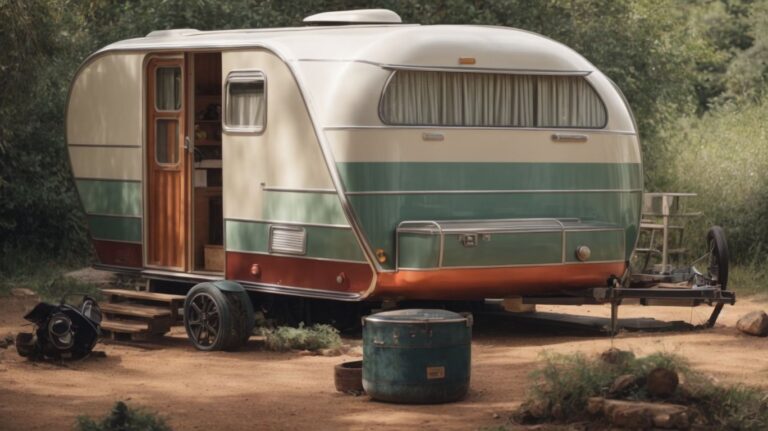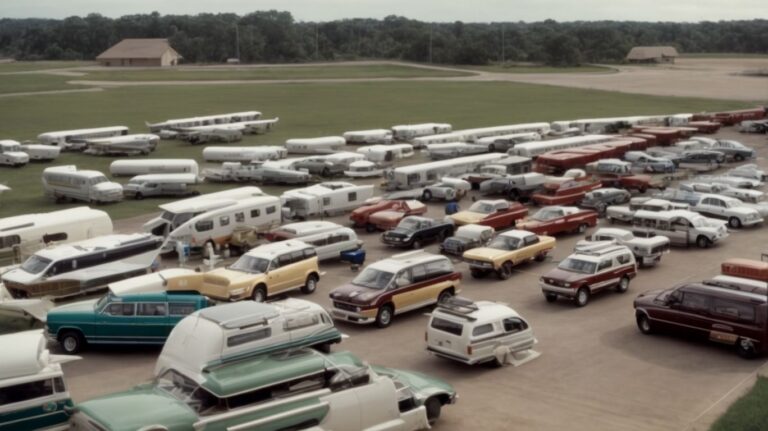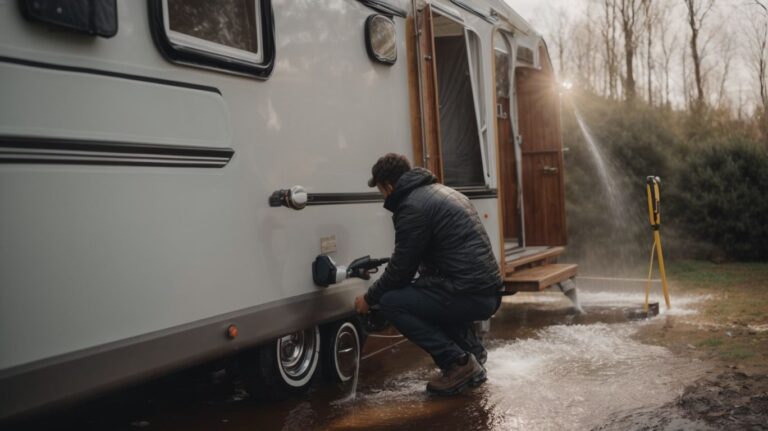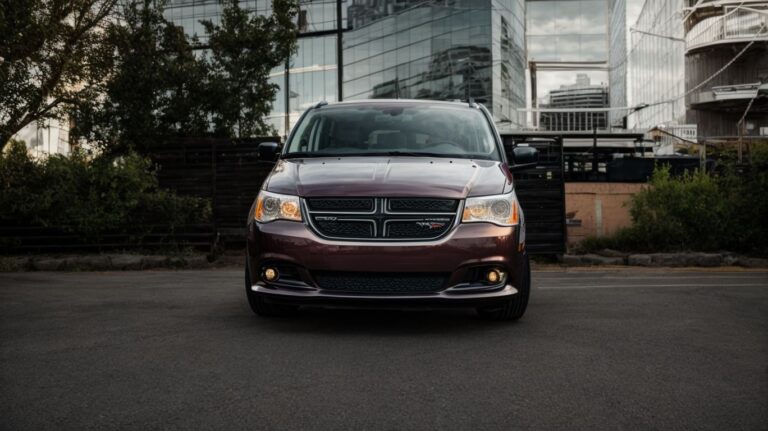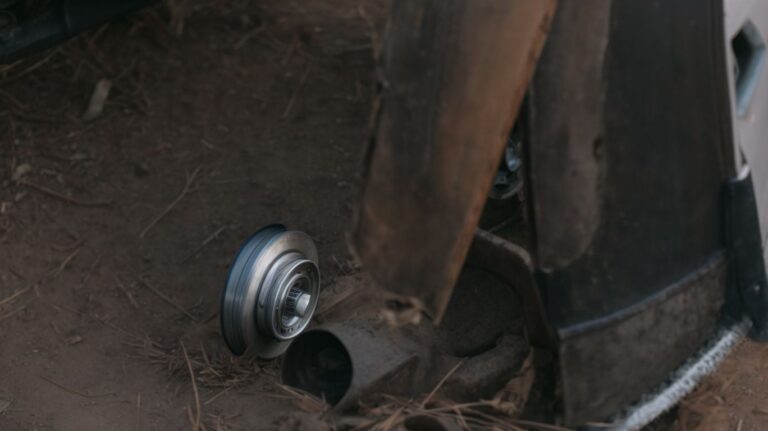Understanding the Causes of Caravan Sway
Caravan sway can be a frightening experience for any driver towing a caravan or trailer. Understanding the causes of caravan sway is crucial to preventing this dangerous situation. Factors such as wind, uneven weight distribution, improper hitching, incorrect tire pressure, road conditions, and speeding can all contribute to caravan sway.
In this article, we will explore what causes caravan sway and provide tips on how to prevent it from happening. Let’s learn how to keep your journey safe and smooth.
Key Takeaways:
What is Caravan Sway?
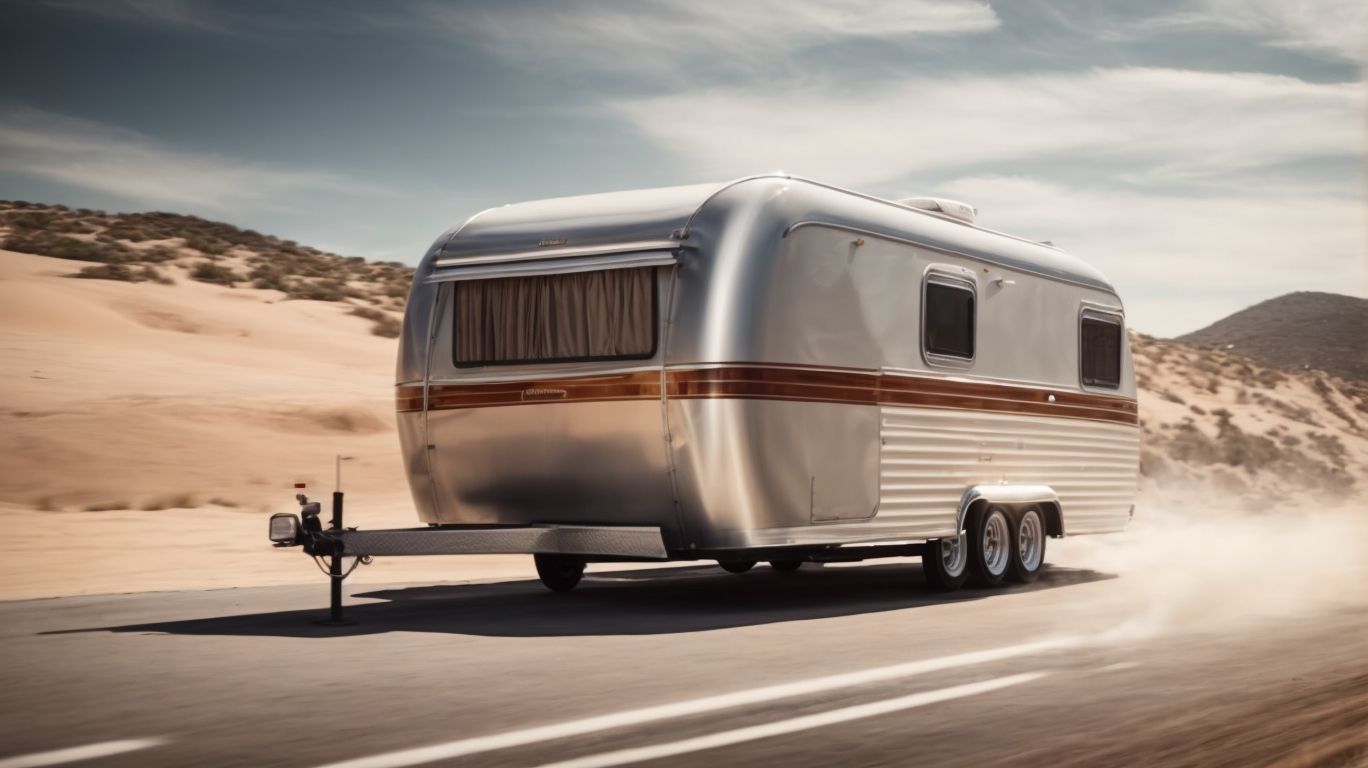
Credits: Motorcaravanning.Com – Gregory Walker
Caravan sway refers to the dangerous lateral movement or instability experienced by a caravan being towed behind a vehicle, caused by the conversion of potential energy into kinetic energy.
When a caravan is in motion, the potential energy stored in its mass and height transforms into kinetic energy, propelling the caravan forward. If the towing vehicle changes speed suddenly, such as during braking or acceleration, this abrupt movement can lead to the buildup of lateral forces within the caravan. As a result, the caravan may begin to sway from side to side, compromising the stability of both the caravan and the towing vehicle.
What Causes Caravan Sway?
Caravan sway can be triggered by various factors, including uneven weight distribution, incorrect tire pressure, and fluctuations in potential and kinetic energy during travel.
Uneven weight distribution is a common culprit in causing caravan sway. When the weight is not evenly distributed across the trailer, it can lead to imbalanced forces acting on the vehicle, making it more prone to swaying. Therefore, ensuring an equal distribution of weight, particularly keeping heavier items low and towards the front of the caravan, can help stabilize the trailer.
Incorrect tire pressure is another significant factor contributing to sway. Improperly inflated tires can result in decreased stability and traction, especially when encountering uneven road surfaces or strong gusts of wind. It’s crucial to regularly check and maintain the tire pressure according to the manufacturer’s recommendations to prevent imbalance and enhance overall safety.
The interplay between potential and kinetic energy also plays a crucial role in caravan sway. As the vehicle gains momentum and speed, potential energy converts to kinetic energy. Sudden shifts in speed or direction can result in an imbalance of kinetic energy, causing the trailer to sway from side to side. By maintaining a steady pace and avoiding abrupt maneuvers, drivers can help minimize the oscillations that lead to caravan sway.
Wind
Strong winds can significantly impact caravan sway, creating instability by exerting lateral forces on the caravan body and tow vehicle.
When strong winds hit the side of the caravan, they can generate a push that destabilizes the vehicle’s equilibrium, particularly when combined with the aerodynamic shape of the caravan. The force exerted by the wind disrupts the balance, leading to a swaying motion that can be challenging to control for the driver. This lateral movement can be further intensified if the caravan is lightweight or if the wind speed is exceptionally high, affecting the overall driving experience and safety on the road.
Uneven Weight Distribution
Uneven weight distribution in a caravan can lead to sway issues, causing instability as the center of mass shifts during travel.
When a caravan is not loaded properly, with more weight concentrated on one side or towards the back, it can result in an unbalanced center of mass. This imbalance creates a tipping force that affects the caravan’s ability to stay in a straight line, leading to swaying movements. The consequences of such sway issues can be dire, including loss of control over the caravan, increased risk of accidents, and potential damage to the vehicle or other road users. It’s essential to understand the significance of proper weight distribution to maintain stability and ensure a safe journey while towing a caravan.
Improper Hitching
Improper hitching of the caravan to the tow vehicle can introduce sway due to the lack of secure connection and alignment, leading to instability during towing.
When the hitch isn’t properly secured, the caravan isn’t able to move as one with the tow vehicle, causing it to swing or sway unpredictably. This can be particularly dangerous on highways or in windy conditions.
A securely hitched caravan and tow vehicle create a balanced and controlled tandem that minimizes the risk of fishtailing or losing control. Factors like weight distribution, hitch type, and hitch height play crucial roles in preventing sway.
Incorrect Tire Pressure
Incorrect tire pressure in caravans can contribute to sway problems, affecting stability and control on the road due to compromised traction and handling.
When tires are overinflated, they tend to have a smaller footprint on the road surface, reducing the amount of grip available, especially on wet or slippery roads. On the other hand, underinflated tires can lead to excess sidewall flex, affecting the responsiveness of the caravan and potentially causing it to sway unpredictably. This lack of stability can be exacerbated when navigating corners or encountering sudden gusts of wind. This imbalance can also put additional strain on the suspension system and lead to uneven tire wear, further compromising the overall safety of the caravan.”
Road Conditions
Road conditions play a significant role in caravan sway, with uneven or slippery surfaces contributing to instability and sway issues during towing.
When caravanning, it is crucial to consider the impact of road conditions on the overall towing experience. Uneven surfaces such as potholes, gravel roads, or rough terrains can lead to heightened levels of caravan sway as the wheels navigate these obstacles. The lack of grip caused by slippery surfaces, especially in wet or icy conditions, further exacerbates the instability, making it challenging to maintain control over the caravan. Sudden changes in road elevation or sharp turns can also trigger sway, emphasizing the need for extra caution and attentiveness when encountering such conditions.
Speeding
Excessive speeding while towing a caravan can exacerbate sway problems, resulting in instability and reduced control over the vehicle and caravan combination.
When a caravan sways due to speed, the side-to-side motion becomes more pronounced and challenging to manage, especially when unexpected factors come into play. The increased speed magnifies the impact of wind gusts, road irregularities, and sudden steering corrections, making it harder to keep the caravan on a steady course.
The loss of control induced by excessive speeding can lead to dangerous situations where the trailer veers uncontrollably, endangering not only the occupants of the towing vehicle but also other road users. The risk of accidents, rollovers, or jackknifes heightens in such scenarios, underscoring the critical importance of maintaining safe speeds while towing.
How to Prevent Caravan Sway?
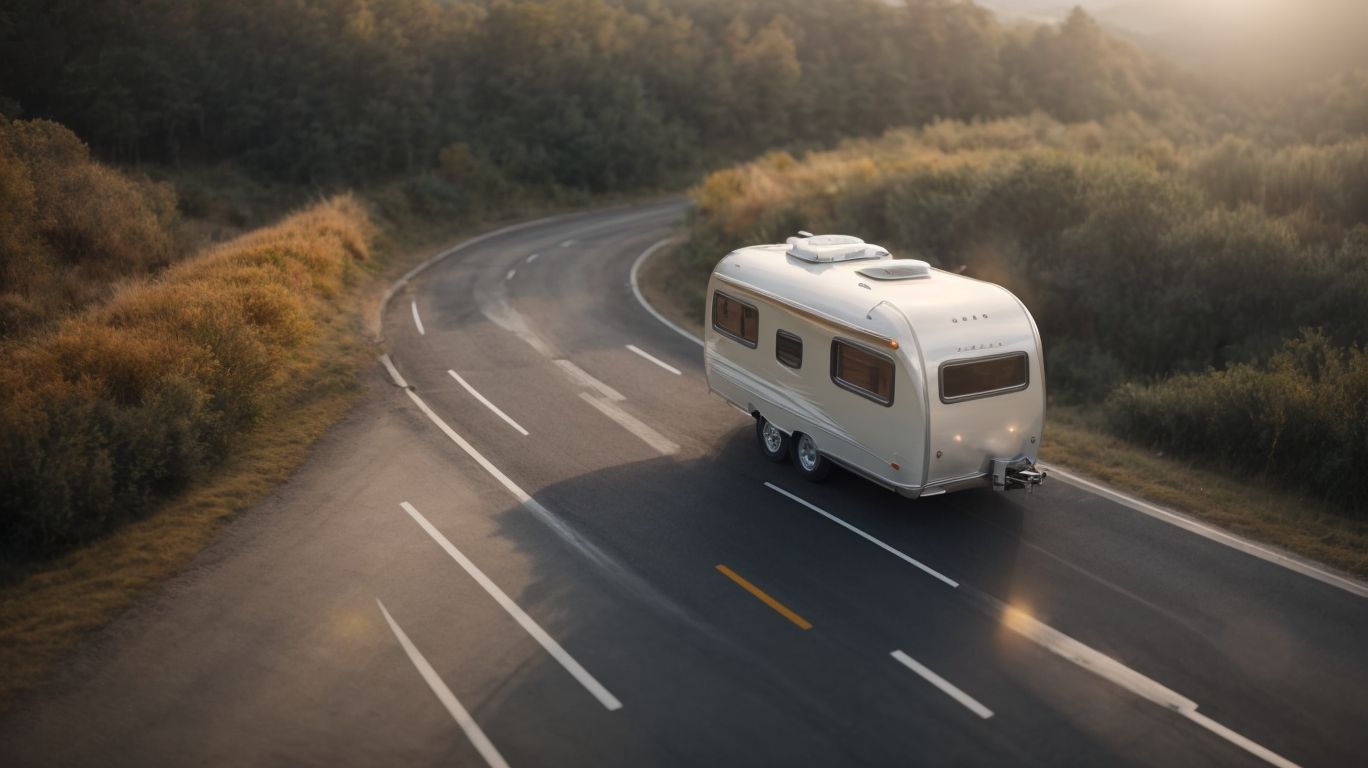
Credits: Motorcaravanning.Com – Scott Hill
Preventing caravan sway requires proactive measures such as ensuring proper tow ball weight, maintaining optimal tyre pressures, loading the caravan evenly, and utilizing stability control systems.
To further enhance towing stability, it is crucial to pay attention to the distribution of weight inside the caravan. Distribute heavier items low and toward the front of the caravan to improve balance. Regularly check and adjust tyre pressures to the manufacturer’s specifications to ensure optimal grip and control. Investing in a quality stability control system can provide an added layer of safety by automatically detecting and mitigating sway. By combining these preventative strategies, you can minimize the risks associated with caravan sway and enjoy a smoother and safer towing experience.
Properly Load the Caravan
Properly loading the caravan involves distributing weight evenly to maintain stability and minimize the risk of sway during travel.
When loading the caravan correctly, it is crucial to consider the positioning of heavy items. Placing them low and centered helps lower the van’s center of gravity, reducing the likelihood of swaying. Ensure that weight is evenly distributed from side to side to maintain balance.
Another vital aspect of caravan loading for stability is securing all items properly. Loose items can shift during transit, affecting the van’s balance and potentially causing sway issues.
Check Hitch and Tow Vehicle Compatibility
Ensuring compatibility between the hitch and tow vehicle is crucial to prevent caravan sway, as mismatched components can lead to instability and safety risks.
When the hitch and the tow vehicle are not properly matched, the connection between them becomes strained, causing the caravan to sway unpredictably. This swaying motion can result in loss of control, putting the occupants of both the tow vehicle and the caravan at risk. Incompatible hitches may not distribute weight evenly, further exacerbating the problem. It’s essential to select a hitch that is designed to work seamlessly with the specific characteristics of the tow vehicle to ensure smooth and safe towing experiences.
Use Weight Distribution Hitch
Utilizing a weight distribution hitch can enhance stability by redistributing weight effectively and reducing the likelihood of caravan sway during towing.
When towing a caravan, uneven weight distribution can lead to swaying and instability, especially during sudden maneuvers or in windy conditions. A weight distribution hitch helps in this scenario by transferring some of the load from the rear axle of the towing vehicle to the front axle and the axle(s) of the trailer. This effective weight redistribution ensures that both the towing vehicle and the caravan are properly balanced, improving overall stability and control. Modern weight distribution hitches often come with built-in stability control features, further enhancing safety on the road.
Adjust Tire Pressure
Regularly adjusting tyre pressures to the recommended levels is essential in promoting stability and control, reducing the risk of caravan sway caused by improper inflation.
When tyre pressures are too low, it can lead to excessive heat build-up, resulting in unnecessary wear and tear on the tyres. Conversely, overinflated tyres reduce the surface area in contact with the road, affecting traction and handling. Maintaining the right pressure not only ensures even wear but also contributes to fuel efficiency, as underinflated or overinflated tyres can increase resistance and fuel consumption. Control behind the wheel is significantly improved when tyres are optimally inflated, allowing for smoother rides and better response to steering inputs.
Drive at a Safe Speed
Driving at a safe speed when towing a caravan is essential to maintain control, enhance safety, and reduce the likelihood of sway incidents on the road.
When your speed is too high, it not only decreases your reaction time but also increases the chances of losing control over your vehicle and the caravan, especially when sudden maneuvers are required. This loss of control can lead to dangerous swaying movements, jeopardizing both your safety and that of others sharing the road with you. By adhering to recommended speed limits and driving cautiously, you significantly minimize the risks associated with caravan sway, providing a smoother and more secure towing experience.
Be Aware of Road Conditions
Maintaining awareness of road conditions is crucial in preventing caravan sway, as being prepared for uneven or slippery surfaces can help drivers anticipate and mitigate instability risks.
When embarking on a road trip with a caravan in tow, it’s essential to stay alert to changes in the road surface to ensure a smooth and safe journey. Inspecting the terrain ahead and adjusting driving techniques accordingly can make all the difference in preventing dangerous sway that could jeopardize the safety of passengers.
- By anticipating challenges such as potholes, gravel patches, or sudden elevation changes
- Drivers can take proactive measures to maintain control and stability throughout the trip.
Staying updated on weather conditions and exploring alternative routes can further enhance the overall safety of the caravan.”
Install Sway Control Devices
Installing sway control devices such as a stability control system can provide an added layer of safety by actively mitigating sway and maintaining stability during towing.
Caravan sway is a common concern during towing, especially in challenging road or weather conditions. By incorporating sway control devices like a stability control system, drivers can experience smoother handling and improved control over their vehicles and caravan. These devices work by detecting any sway or instability and automatically applying corrective measures, such as adjusting brake pressure or reducing engine power, to bring the setup back to a stable position.
This proactive approach significantly reduces the risk of potential accidents caused by sway, ensuring a safer and more controlled towing experience. Stability control systems can offer peace of mind to drivers, allowing them to focus on the journey ahead without constantly worrying about sway or loss of control. In essence, investing in sway control devices not only enhances safety but also promotes a more comfortable and confident towing experience.
What to Do if Caravan Sway Occurs?
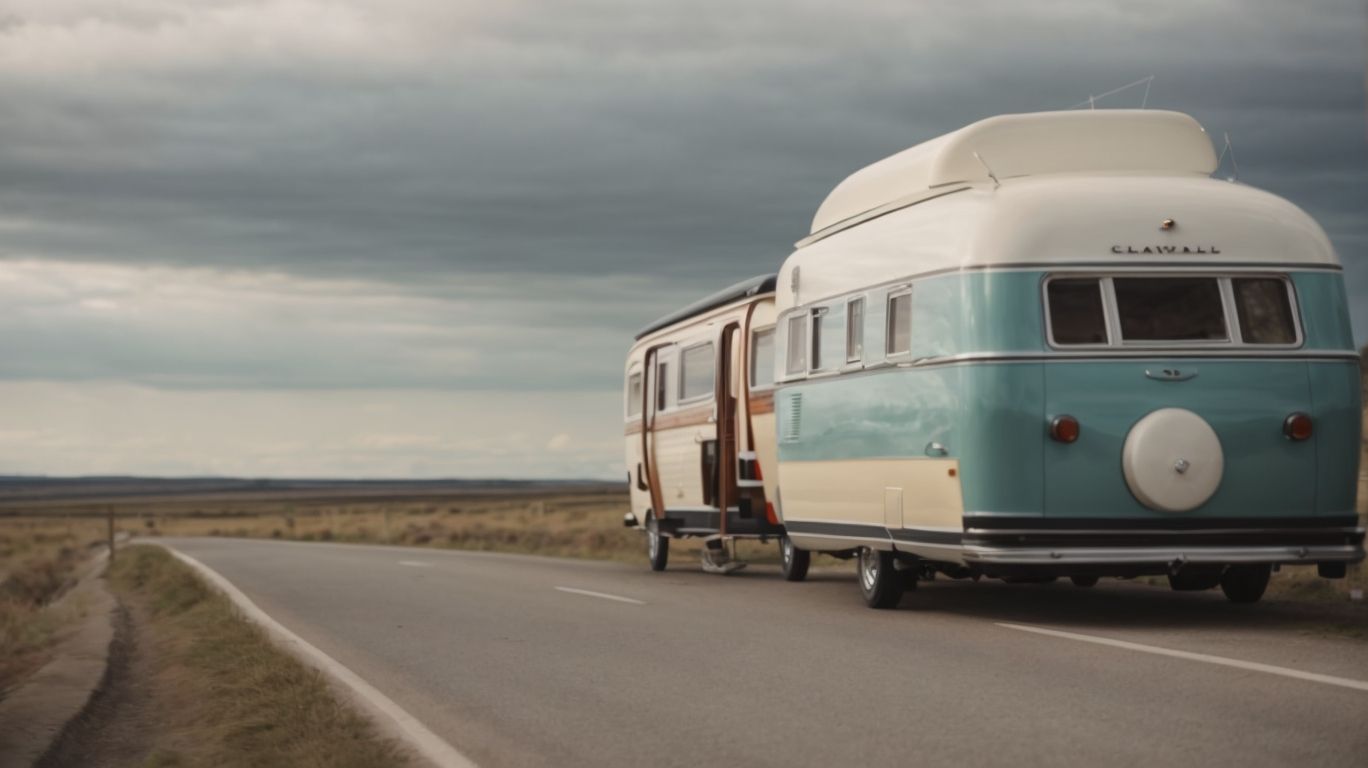
Credits: Motorcaravanning.Com – Brian Jones
In case of caravan sway, it’s crucial to remain calm, maintain straight steering, avoid sudden braking, and gradually slow down to regain control and stability.
When facing the unsettling moment of a caravan sway, the primary objective should be to preserve a steady and composed demeanor. By keeping a firm grip on the steering wheel and resisting the urge for abrupt braking maneuvers, you can significantly influence the outcome of the situation. Instead, focus on employing smooth steering adjustments to guide the trailer back in line with your vehicle’s path.
As you navigate through this challenging scenario, braking plays a vital role in restoring stability. Implement controlled pressure on the brakes, ensuring that it is evenly distributed to prevent further exacerbation of the sway. The interaction between steering and braking must harmonize seamlessly, working in tandem to gradually reduce speed and allow the system to rebalance.
Stay Calm and Steer Straight
Remaining calm and steering straight are pivotal in responding to caravan sway, as composed actions can help regain stability and control over the towing situation.
Caravan sway, also known as trailer sway, occurs when external factors such as wind gusts or improper loading cause the trailer to oscillate side-to-side behind the towing vehicle. This can be a nerve-wracking experience, but staying composed is key. By maintaining composure and avoiding sudden jerks of the steering wheel, drivers can prevent exacerbating the sway and maintain control. It’s crucial to keep a firm grip on the wheel and make smooth, gradual corrections to straighten out the trailer’s path. Evenly distributing weight in the caravan and properly adjusting tire pressure can contribute to improved stability and reduce the likelihood of sway.”
Do Not Brake Suddenly
Avoiding sudden braking is essential when dealing with caravan sway, as abrupt stops can exacerbate instability and compromise safety during towing.
When a towing vehicle suddenly brakes, the force can transfer to the caravan, causing it to sway uncontrollably. This can lead to dangerous situations on the road, increasing the likelihood of accidents and loss of control. By maintaining a consistent speed and applying brakes gently and steadily, drivers can minimize the risk of caravan sway and ensure a safer journey. It is crucial to allow for ample stopping distance and anticipate traffic flow to avoid the need for sudden braking maneuvers. Prioritizing smooth, gradual deceleration is key to managing caravan sway effectively.
Slow Down Gradually
Gradually reducing speed is key in addressing caravan sway, as controlled deceleration can help stabilize the towing setup and minimize sway effects on the road.
When encountering caravan sway, drivers often feel a sense of panic, but slowing down in a controlled manner is the safest approach. By easing off the accelerator and gently applying the brakes, the shift in momentum can be managed effectively, enhancing stability significantly. This method not only reduces the risk of a potential accident but also gives the driver more time to assess the situation and take necessary corrective actions. Gradual speed reduction allows the caravan’s weight distribution to settle, mitigating the sway risks as equilibrium is restored along the journey.
Pull Over and Check for Any Issues
Pulling over to assess any issues is crucial when caravan sway occurs, allowing drivers to inspect the setup, address potential problems, and ensure the safety of the towing operation.
When experiencing caravan sway, it’s essential to recognize that immediate action can prevent any potentially dangerous situations. Taking the time to stop and thoroughly check for problems not only guarantees a safer journey but also contributes to long-term maintenance of both the towing vehicle and the caravan. By conducting regular inspections and swiftly addressing any detected issues, drivers establish a habit of prioritizing safety and preventative measures. This proactive approach significantly reduces the risk of accidents and ensures a smoother, more secure towing experience.
Frequently Asked Questions
What is caravan sway and why does it happen?
Caravan sway, also known as trailer sway, is the side-to-side movement or rocking motion of a caravan or trailer while being towed behind a vehicle. It can be caused by a number of factors, including wind, road conditions, and improper loading of the trailer.
Can wind cause caravan sway?
Yes, wind is one of the main causes of caravan sway. When a strong gust of wind hits the side of the caravan, it can cause it to sway back and forth. This is especially common when traveling on open highways or across bridges.
How do road conditions affect caravan sway?
Road conditions, such as rough or uneven surfaces, can also contribute to caravan sway. Bumpy roads or potholes can cause the caravan to bounce and sway, making it difficult for the driver to maintain control.
What role does weight distribution play in caravan sway?
Proper weight distribution is crucial in preventing caravan sway. If the weight is not evenly distributed in the caravan or trailer, it can cause the rear of the vehicle to become unstable, leading to sway.
Can driving speed impact caravan sway?
Yes, driving speed can greatly impact caravan sway. Driving at high speeds increases the chances of experiencing sway, especially when combined with other factors such as wind or improper weight distribution.
What are some ways to reduce caravan sway?
To reduce caravan sway, make sure the weight is evenly distributed, drive at a safe and steady speed, and avoid driving in high winds or on rough roads. Additionally, using a weight distribution hitch and anti-sway bar can help to stabilize the caravan. It is also important to regularly maintain and inspect your caravan or trailer to ensure it is in good condition.



